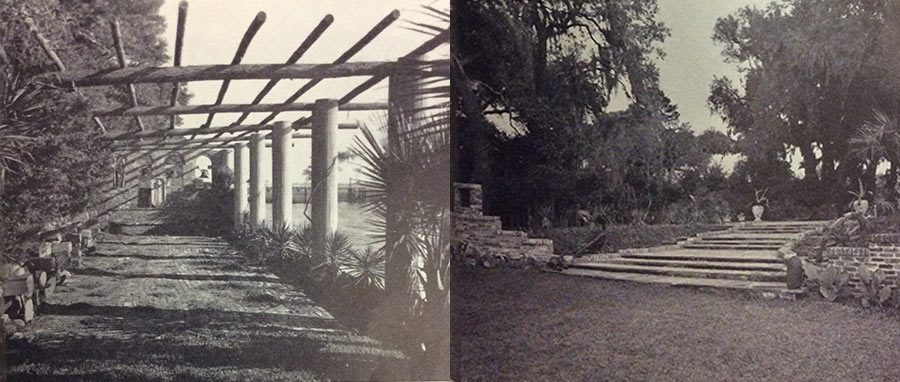
What is it about Mount Pleasant that attracts visitors? The picturesque marshes at the old Pitt Street Bridge? Or perhaps the iconic shrimp boats at the Shem Creek pier? Maybe it’s the panoramic views from Mount Pleasant Memorial Waterfront Park? No doubt, it’s hard for visitors to stay away from these spots today.
The town’s first tourist attraction was a private garden in the Old Village near Alhambra Hall. In 1928, a couple from Hopewell, Massachusetts, purchased waterfront property there and over the next decade transformed it into a botanical paradise. Dana Osgood and Laird Branch Osgood commissioned seven intimate gardens to be created within the larger landscape, each with its own title and theme: The Sea Garden, The Wind’ll Blow, Little Wheel, Twyfy’s Garden, Eight Bells, Wiggins Walk and Amalfi. The place was renowned for its hundreds of varieties of camellias, but thousands of plants — including azaleas, wisteria and roses — beckoned visitors into a flowering wonderland. Indigenous trees and shrubs such as cassina and yucca were also included in the design. A 200-foot pathway along the harbor added to the charm, and a concrete seawall along the water’s edge protected the property from storm surges.
With a huge anchor and chain for emphasis, the Osgoods called their masterpiece Pierates Cruze Gardens. The unusual spelling of the nautical name was a nod to Pirates Pie, a breakfast dish served in their native New England. By 1943, locals and tourists alike flocked to the horticultural gem. Any literary publication touting Charleston’s other famous gardens, such as Middleton and Magnolia, also included Pierates Cruze, and the spot drew attention from near and far. In 1947, the Massachusetts Horticultural Society even bestowed upon Mrs. Osgood a gold medal for her success in cultivating new varieties of camellias.
Lifelong East Cooper resident Roy Williams said that the Osgoods were civic-minded people and that “she frequently invited women in the Old Village over for tea.” As a boy, Williams remembered Mrs. Osgood was a frequent fixture shopping on Pitt Street, where he would often glimpse her getting into and out of her car. “They rather stood out because they were quite wealthy,” he mused. Another longtime resident of the Old Village recalled that his father was once hired as a gardener at Pierates Cruze.
The location was a prominent tourism draw until the late 1950s. Following the death of the Osgoods, the property was sold in 1961 and divided into 13 residential lots, each selling for $10,000, lining a horseshoe-shaped street aptly named Pierates Cruz. But all that remains of the horticultural heaven are several columns from a pergola and a small brick wall made from the original bricks. And the memories.
By Mary Coy

Leave a Reply